DeafBlind groups thrive by using innovative communication tools like tactile signing, braille displays, and specialized apps that foster connection and independence. They build a strong culture through shared traditions, storytelling, and tactile art, creating a sense of belonging. Advocacy efforts improve accessibility and support, while supportive environments and resources enhance community participation. Personal stories highlight resilience and collective strength. Exploring these strategies shows how DeafBlind communities cultivate deep bonds and vibrant cultures—keep exploring to learn more.
Key Takeaways
- DeafBlind groups foster community through shared traditions, cultural expressions, and tactile communication methods that reinforce collective identity.
- Innovative communication technologies, such as tactile signing and assistive apps, enable active participation and social engagement.
- Advocacy efforts and accessible environments promote inclusion, resources, and support networks vital for community resilience.
- Personal stories and shared experiences strengthen bonds, inspire hope, and highlight collective strength within DeafBlind communities.
- Vetted resources and inclusive communication techniques ensure reliable information, fostering trust and cohesion among members.
The Role of Communication Innovations in Building Connections
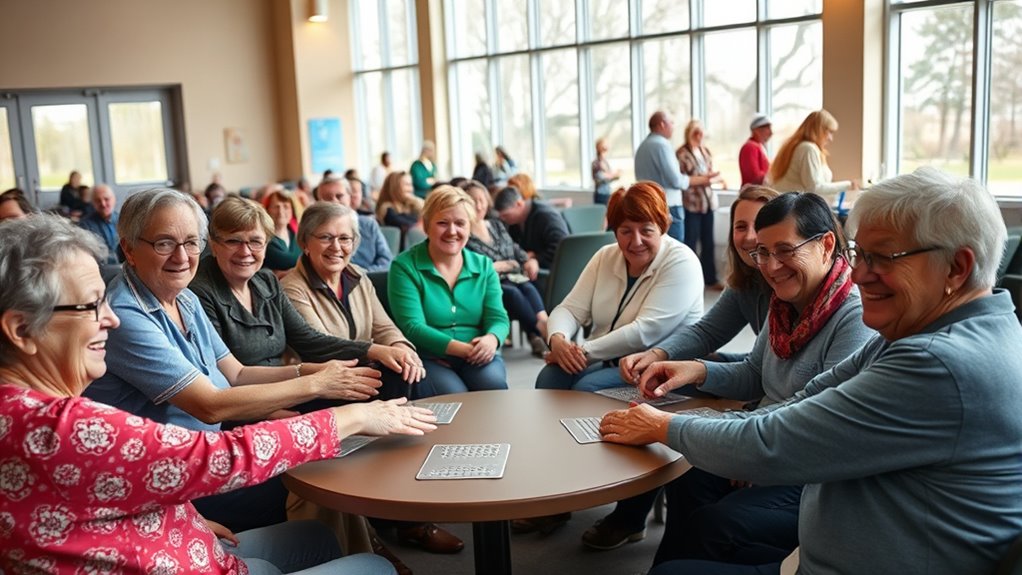
Communication innovations play a pivotal role in helping DeafBlind individuals build meaningful connections. With the advancement of assistive technology, you can now access a variety of communication methods tailored to your needs. Devices like tactile signing systems, braille displays, and vibrating alert systems open new pathways for interaction. These tools enable you to relay and receive information more effectively, fostering independence and social engagement. Many communities also utilize specialized apps that convert text to speech or provide haptic feedback, making communication smoother. By embracing these innovations, you can participate actively in conversations, share experiences, and develop relationships. Ultimately, technology bridges gaps, empowering you to connect with others and build a vibrant, inclusive community.
Shared Traditions and Cultural Expressions in DeafBlind Communities
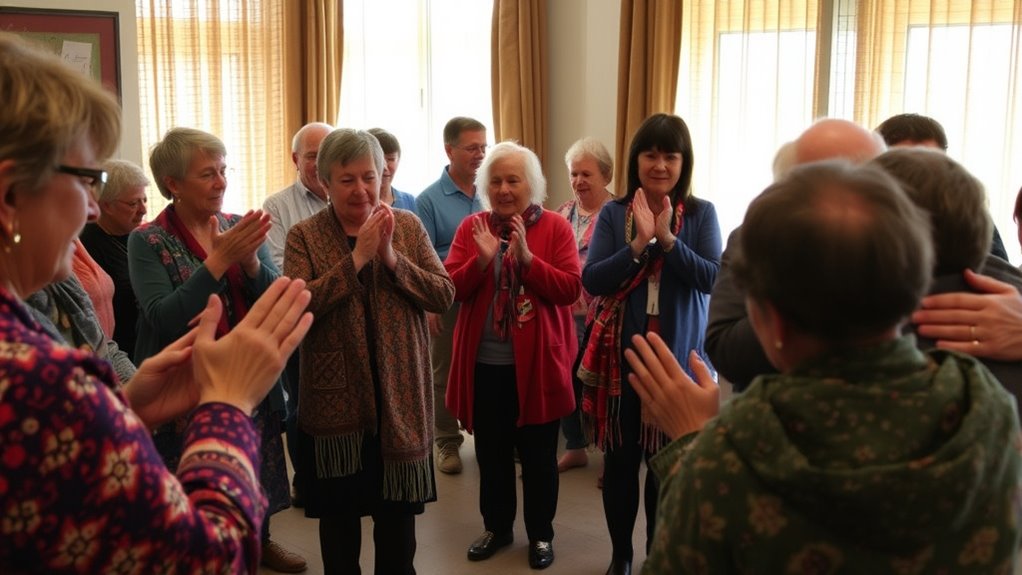
Shared traditions and cultural expressions play a crucial role in strengthening the bonds within DeafBlind communities. You often see this through the use of sign language, which isn’t just communication but a essential part of your shared identity. Cultural festivals are another powerful tradition, bringing people together to celebrate DeafBlind life through tactile sign language performances, art, and storytelling. These events create spaces where your community can express its unique culture, passing down stories and customs that reinforce your collective identity. Participating in these traditions helps you feel connected and proud of your heritage. They foster a sense of belonging, ensuring that your culture endures and evolves, even as new generations carry the traditions forward with enthusiasm and care. One key element in supporting these traditions is the use of self watering plant pots, which symbolize nurturing and growth within the community and can be adapted to include tactile or accessible features that enhance participation. The importance of cultural calibration in maintaining authentic and meaningful traditions is often overlooked but vital for preserving the integrity of shared practices. Additionally, incorporating natural materials into community activities can deepen the connection to cultural roots and environment, highlighting the importance of personality traits like adaptability and resilience in cultural preservation efforts. Recognizing the role of cultural adaptation ensures that traditions remain relevant and meaningful in changing contexts.
Advocacy and Collective Action for Rights and Accessibility
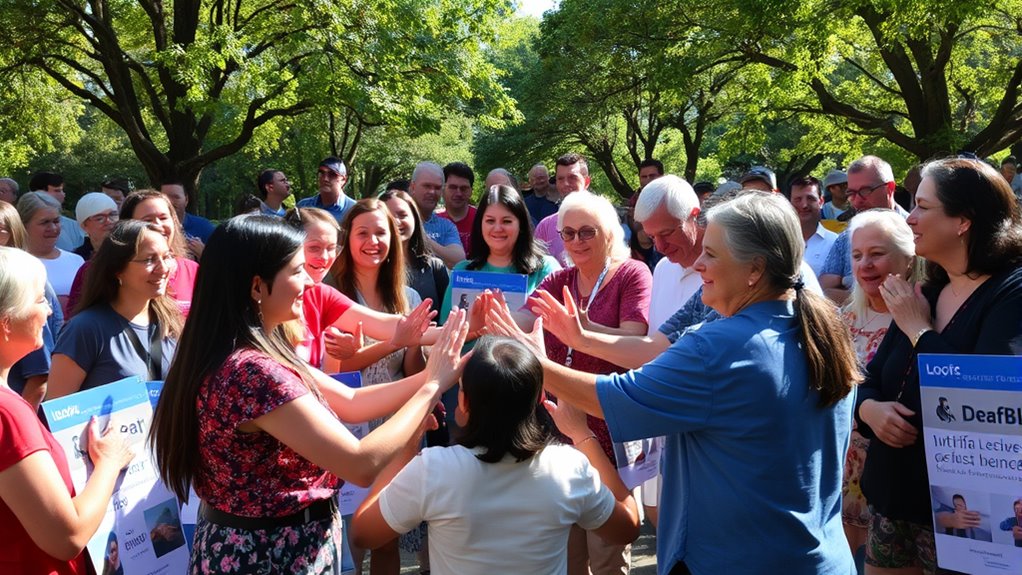
How do DeafBlind communities guarantee their voices are heard and their rights protected? They engage in strong policy advocacy, pushing for laws that improve accessibility and uphold their rights. They work with allies to influence legislation and ensure their needs are prioritized. Assistive technology plays a crucial role in this effort, helping bridge communication gaps and giving DeafBlind individuals a platform to participate fully. By organizing collective actions like protests, petitions, and public awareness campaigns, they amplify their message and hold decision-makers accountable. These efforts empower the community, ensuring their concerns are addressed at local, state, and national levels. Regular use of glycolic acid products has been linked to improved skin texture and radiance, which can boost confidence within the community. Additionally, understanding educational and skill-building toys can facilitate more inclusive learning environments that support DeafBlind individuals’ development. Recognizing the importance of remote hackathons can also foster innovative solutions that address accessibility challenges faced by the community. Emphasizing the importance of accessible communication methods further supports their active participation. Through persistent advocacy and strategic use of technology, DeafBlind communities actively shape policies that promote equality and accessibility for all. Moreover, incorporating trailers and sound design techniques from the media industry can inspire new approaches to creating inclusive communication tools.
Creating Supportive Environments: Spaces and Resources
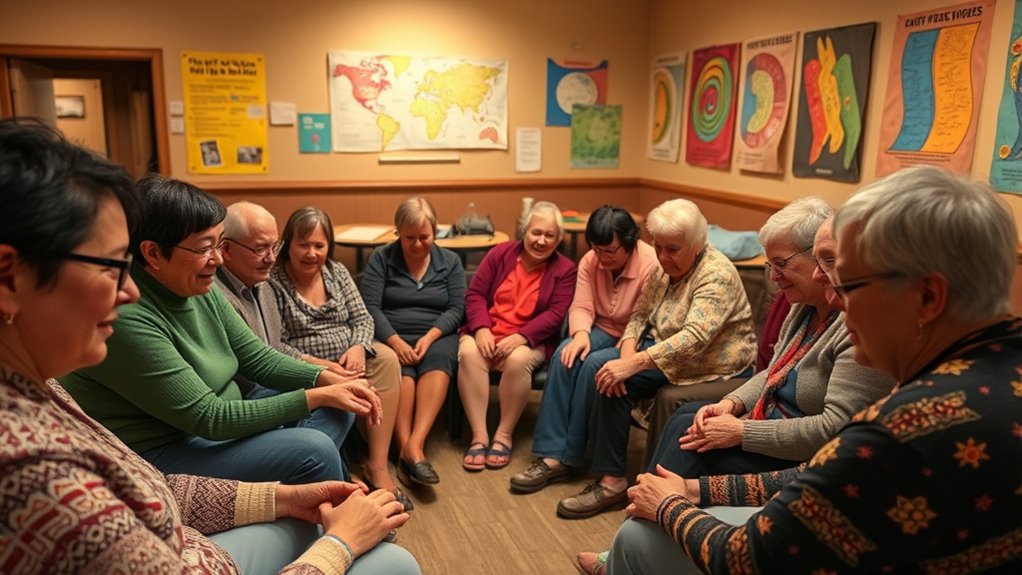
Creating supportive environments for DeafBlind individuals involves designing spaces and providing resources that meet their unique needs. Sensory integration becomes essential, guaranteeing environments are accessible through tactile cues, bright lighting, or sound adjustments, helping individuals navigate comfortably. Spaces should foster interaction, encouraging peer mentorship where experienced members guide newcomers, sharing strategies and building confidence. Resources like specialized communication tools and adaptive technology empower DeafBlind people to participate fully. Training staff and volunteers to understand sensory needs ensures a welcoming atmosphere. By intentionally creating inclusive spaces that promote sensory engagement and peer support, you help build a community where DeafBlind individuals feel safe, valued, and connected. Incorporating sensory processing strategies can further enhance accessibility and comfort for all members. Additionally, integrating assistive technology can significantly improve communication and independence. Designing environments with adaptive features tailored to sensory needs can also promote greater autonomy and engagement for DeafBlind individuals. Recognizing the importance of environmental modifications can help reduce sensory overload and improve overall well-being. These environments lay the foundation for thriving, resilient communities rooted in shared understanding and mutual aid.
Personal Stories of Resilience and Community Impact
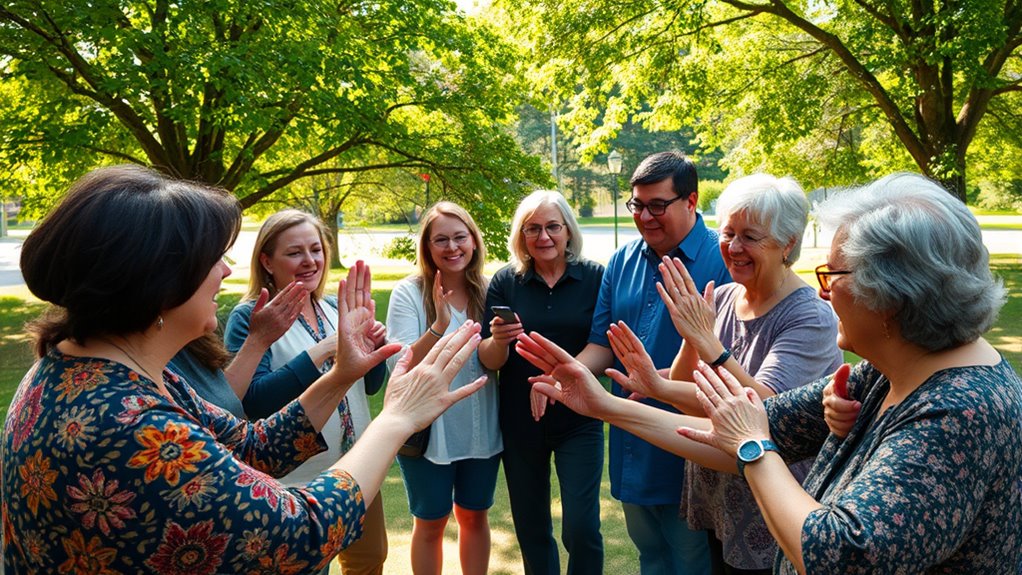
Personal stories of resilience highlight the incredible strength and determination of DeafBlind individuals as they navigate challenges and build meaningful connections. These stories showcase how interpersonal support plays an essential role in overcoming obstacles and fostering a sense of belonging. When you hear these experiences, you see how community members come together to preserve their culture, sharing traditions and language that keep their identity alive. Engaging in community-building activities can reinforce these bonds and promote cultural continuity. Your own involvement can make a difference, strengthening bonds and empowering others to thrive despite adversity. These personal narratives inspire hope and demonstrate the impact of collective resilience. By listening to and sharing these stories, you help sustain a vibrant community that values cultural preservation and mutual support, ensuring that DeafBlind culture continues to grow and flourish. Additionally, accessible communication tools play a vital role in facilitating connections and fostering inclusion within the community. For example, vetted resources and organizations provide vital support and opportunities for connection within the DeafBlind community, including adaptive communication methods that enhance interactions for members. Utilizing inclusive communication techniques can further bridge gaps and strengthen community bonds.
Frequently Asked Questions
How Do Deafblind Groups Fund Their Community Programs?
You can support deafblind groups by exploring their fundraising strategies, which often include hosting events, accepting donations, and engaging local businesses. They also rely heavily on grant applications to secure funding for their community programs. By participating in these efforts or spreading awareness, you help guarantee these organizations can continue building community and offering essential services to their members. Your involvement makes a meaningful difference in their sustainability.
What Technological Challenges Do Deafblind Communities Face Today?
You’re facing a tough nut to crack with technological challenges today. Assistive technology often falls short, creating communication barriers that hinder connection. Devices may be unreliable or difficult to use, leaving communities feeling left in the dust. Improving accessibility and innovation is vital, but the road ahead is steep. Overcoming these obstacles requires dedication and collaboration, ensuring everyone can communicate effectively and thrive together.
How Do Cultural Events Strengthen Deafblind Collective Identities?
You see that cultural events play a essential role in strengthening deafblind collective identities by fostering cultural preservation and identity affirmation. When you participate, you connect with shared traditions and stories, reinforcing a sense of belonging. These events allow you to celebrate your unique culture, build pride, and pass down heritage. As a result, you feel more empowered, united, and recognized within the broader community, enhancing your collective resilience and cultural continuity.
What Training Is Available for Allies to Support Deafblind Communities?
You can access specialized training to support deafblind communities, focusing on sensory integration and advocacy skills. These programs teach you how to better understand sensory challenges and communicate effectively. By participating, you’ll learn how to advocate for their needs and foster inclusive environments. Many organizations offer workshops, online courses, and hands-on training, empowering you to be a confident ally and contribute to building stronger, more supportive deafblind communities.
How Do Deafblind Groups Collaborate Internationally?
You can see deafblind groups collaborate internationally through cross-cultural exchange and shared advocacy efforts. They connect via online platforms, conferences, and joint projects, fostering understanding and solidarity across borders. By sharing strategies, resources, and stories, you help build a global community that supports deafblind individuals. This collaboration strengthens their voices, promotes awareness, and advances policies that benefit deafblind communities worldwide.
Conclusion
You might believe that communication barriers limit deafblind communities, but the truth is, innovative tools and shared traditions prove otherwise. These groups thrive by building strong connections, advocating for rights, and creating supportive spaces. Their resilience shows that, with collective effort, you can challenge assumptions and foster genuine community. So, consider how your actions can contribute to breaking down barriers—because when everyone’s voice is heard, we all grow stronger together.











